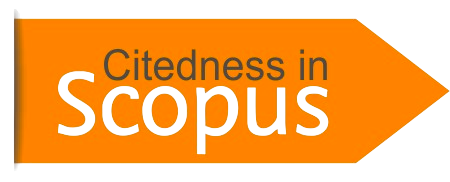The Role of the Community in the Development of Rice Fields as Tourist Attractions in Lempake Village, North Samarinda
DOI:
https://doi.org/10.30631/sdgs.v4i2.2689Keywords:
Impact, Agricultural Land, Tourist AttractionsAbstract
Tourism is a sector that has a large role in national development. One example of the development of the tourism sector in the city of Samarinda is the addition of agricultural land. This research aims to determine the role and impact of rice field tourist attractions. This research was carried out in Lempake Village, North Samarinda. Research data was collected using observation, interviews and documentation and using qualitative descriptive methods. The results of this research show that the role of the community fully supports the existence of the Sawah Pandang tourist attraction moving in the agricultural sector, which is carried out by the tourist attraction manager and the surrounding community. This tourist attraction collaborates with the community who act as initiators, implementers, providing opinions, and as evaluation monitors in the development of the tourist attraction. The impact on the community around the tourist attraction with this tourism is that in this case it includes environmental conditions where the local community already feels that the environment is the main attraction of tourist activities which positively influences the lives of the surrounding community, opening up many opportunities.
References
Ahmad, S. (2012). Marketing in business (1st ed.). Jakarta: Mitra Discourse Media.
Aprilia, T. (2014). Community based development. Bandung: Alphabeta.
Bona, L. P. (2018). Sustainable tourism communication through Pokdarwis (Tourism Awareness Group) in West Bandung District. In Proceedings of the International Conference on Social Sciences, 1(1).
Cameron, K. S., & Quinn, R. E. (1999). Diagnosing and changing organizational culture: Based on the competing values framework. Reading, MA: Addison Wesley.
Demartono, A., et al. (2015). Kuw Tourism Village development habitus: Case study of Kuwu Tourism Village, Kradenan District, Grobogan Regency. Retrieved from https://proceedings.uinsad.ac.id
Devy, H. A., & Soemanto, R. B. (2017). Development of natural tourism objects and attractions as tourist destinations in Karanganyar Regency. Journal of Sociology DILEMMA, 32(1).
Dewi, M. H. U., Fandeli, C., & Baiquni, M. (2013). Development of a tourism village based on local community participation in the Jatiluwih Tourism Village, Tabanan, Bali. Kawistara Journal, 3(2), 129–139.
Dewi, W. (2009). Sociological concepts and theories. Bandung: Refika Aditama.
Effendi, S., & Irene. (2018). Community participation in economic empowerment. Yogyakarta: Student Library.
Fandeli, C. (2000). Basics of natural tourism management. Yogyakarta: Liberty.
Fitari, Y., & Ma'arif, S. (2017). Benefits of the development of the Wonolopo Tourism Village on the social, economic and environmental conditions of local communities. Journal of Regions and Environment, 5(1), 29–44.
Handoyo, & Eko. (2015). Studies of Indonesian society. Yogyakarta: Ombak.
Hardjowigeno, S., & Widiatmaka. (2018). Land suitability evaluation and land use planning. Yogyakarta: Gadjah Mada University Press.
Hani'ah, J. (2017). The role of Pokdarwis Pancoh in increasing community participation as an effort to develop the Pancoh, Turi, Sleman Tourism Village. Pend Student Electronic Journal, 6(6), 628–639.
Horton, P. B., & Hunt, C. L. (1993). Sociology (6th ed., A. Ram & T. Sobari, Trans.). Jakarta: Erlangga Publishers.
Ilham, et al. (2000). Factors of land use change. Retrieved from http://ejournal.unud.ac.id/abstrak/konversilahan.pdf
Maha Rani, D., & Prasetya, D. (2014). Development of tourism potential of Sumenep Regency, Madura, East Java (Case study: Lombang Beach). Young Politics Journal, 3(3).
Mappi, S. (2012). Marketing in business (1st ed.). Jakarta: Media Discourse Partner Publisher.
Maurice Duverger. (1998). Political sociology. Jakarta: Rajawali.
McRae, S. G., & Burhan, C. P. (1981). Land evaluation. Oxford: Clarendon Press.
Neil, W. (1999). Ecotourism: Impact, potentials, and possibilities. Tourism Journal, 145.
Ramadhania, M. (2019). The effect of investment on economic growth and labor absorption in the tourism sector in East Kalimantan. Economic Journal.
Raves, M. L. (2007). Land resource inventory methods. Yogyakarta: Andi Publishers.
Sinaga. (2010). Tourism department strategy in increasing tourist visits. Tourism Journal, 1.
Sitorus, C., & Natalia. (2016). The role of the Lake Toba National Tourism Strategic Area. Journal of Transportation & Logistics Management, 4(1).
Siswantoro, H., Anggoro, S., & Sasongko, D. P. (2012). Optimization strategy for mass tourism in the Grojogan Sewu Nature Tourism Park conservation area. Journal of Environmental Science, 10(2), 100–110.
Wahyuningsih, S. (2018). Strategy for developing the Apparalang Beach tourist attraction as a tourist destination in Bulukumba Regency. Tourism Journal, 121.
Wahyunto, M. Z., Abidin, A. P., & Sunaryanto. (2001). Citarik watershed land use change study. National Seminar on Multifunctional Rice Fields. Bogor: Asean Secretariat Maff Japan & Soil and Agroclimate Research and Development Center.
Wardana, Y., & Yusrizal, F. (2017). The role of Tourism Awareness Groups (Pokdarwis) in the development of Nagari Tuo Pariangan Tourism in Tanah Datar Regency. Student Online Journal in the Field of Social and Political Sciences, 5(1), 1–14.














